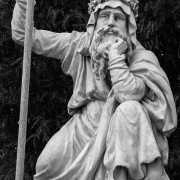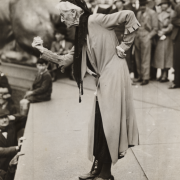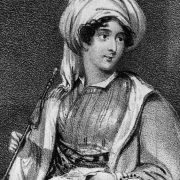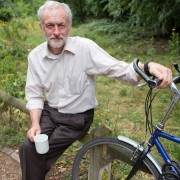MONTHLY BLOG 160, WHO MADE THE CLAPHAM OMNIBUS SO FAMOUS?
If citing, please kindly acknowledge copyright © Penelope J. Corfield (2024)
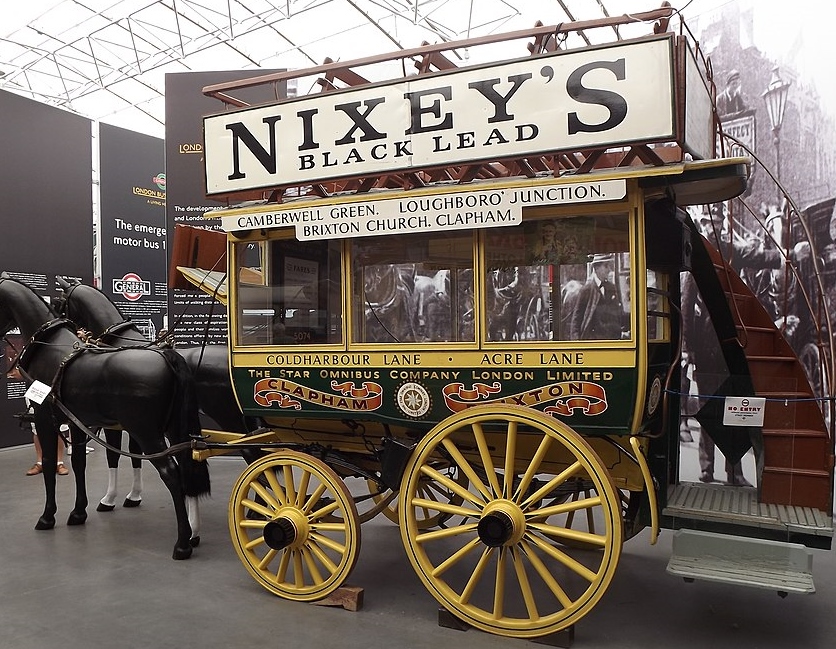
| Fig. 1: Horse-Drawn Clapham Omnibus, running from Camberwell Green to Clapham (1880s), on display in London Bus Museum, Cobham Hall, Brooklands Rd, Weybridge, Surrey. |
In mid-March, I was delighted to give an illustrated talk to the Clapham Society. The packed audience kindly laughed at my jokes – and asked great questions. And the event was held in a venue, wittily named The Clapham Omnibus.1 Which set me wondering about the origins of naming ‘The Man on the Clapham Omnibus’ as the (fictional) embodiment of a ‘reasonable citizen’.
The phrase was first recorded in an English court of law in 1903; and, this formulation (with local variations) has remained current in the parlance of the Anglophone legal system. Its original wording was attributed to Charles Bowen, an erudite and witty Victorian judge.2
A person on the Clapham omnibus (these days we would include women as readily as men) would not be taken as a major leader of style and fashion. But, equally, such a person would not come ‘from the back of beyond’. The south London suburb of Clapham was manifestly not a key centre of either industry or international commerce. Yet it was no backwater. It was a hub of circulating news and information, being located on the Portsmouth Road (now classified as the A3 trunk road), running between the City of London and Portsmouth. And there were other main radial routs crossing through the parish, such as the Brighton Road (now the A24) – all taking goods and people into and out of town, along with news and information as a matter of course.
Would Charles Bowen have travelled on these south London routes? Undoubtedly yes. He made his legal career in London; but in 1872 he purchased a country residence named Colwood House – near to Cuckfield in the West Surrey hills – not far from the London to Brighton Road. Whether he actually rode on a Clapham omnibus (pictured above) remains unknown. But he must have traversed through Clapham many times.
And here’s a further thought. What had Clapham to do with the formation of public opinion? Nothing officially, of course. But in the early nineteenth century, the leading group of anti-slavery campaigners became renowned as the ‘Clapham Sect’ or (more sarcastically) as the ‘Clapham Saints’.3 Their media-savvy campaign was one major contributing factor (though not the only one) in changing British public opinion from indifference to support for anti-slavery.4 So the name of Clapham already had resonance. When Charles Bowen was coining a witty phrase to signify a reasonable citizen, aware of the issues of the day – even if not an expert – he could imagine that individual to be travelling on the Clapham omnibus with complete plausibility.
Amusingly enough, for a Battersea resident like myself, two leading figures in the ‘Clapham Sect’ actually lived in the neighbouring parish of Battersea. They were William Wilberforce, with a house on Broomwood Road,5 and his cousin, the banker Henry Thornton, resident on Battersea Rise.6 But the Battersea Society is not trying to rename these ardent campaigners as the ‘Battersea Sect’. They walked or drove a mile across Clapham Common to worship at the Holy Trinity Church, sited within the north-east corner of the Common, attracted by the evangelical preaching of its Anglican minister John Venn.7 Fittingly enough, therefore, the campaigners were, unofficially, named after the parish whose church acted as their initial focal point.
How much the resonance of that association influenced Charles Bowen remains unknown. Yet the result is that Clapham is famous both for the anti-slavery campaigners8 – and for the people on its omnibus. Good luck to them all!
ENDNOTES:
1 For the Omnibus Theatre, 1 Clapham Common Northside, SW4 0QW, see https://www.omnibus-clapham.org.
2 Charles Synge Christopher Bowen, Baron Bowen (1835-94) of Colwood (Sussex): see https://en.wikipedia.org/wiki/Charles_Bowen,_Baron_Bowen (viewed 31 March 2024); and an admiringly affectionate memoir by H.S. Cunningham, Lord Bowen: A Biographical Sketch … (London, 1897).
3 See E.E.F. Smith, Clapham Saints and Sinners (Extract from Clapham Antiquarian Society, 1987); M. Bryant, The Clapham Sect (Clapham Society, 2003); S. Tomkins, The Clapham Sect: How Wilberforce’s Circle Changed Britain (Oxford, 2010).
4 See discussion in B. Hilton, The Age of Atonement: The Influence of Evangelicalism on Social and Economic Thought, 1795-1865 (Oxford, 1988).
5 A plaque (affixed in 1906) today adorns the side of 111 Broomwood Road, at the junction with Wroughton Road (SW11), where Broomwood House, quondam residence of William Wilberforce, stood until 1904. For an overview of Wilberforce (1759-1833) and his impact, see W. Hague, William Wilberforce: The Life of the Great Anti-Slave Trade Campaigner (London 2007).
6 Henry Thornton (1760-1815) lived in a grand residence named Battersea Rise House (demolished 1907), on Battersea Rise, SW11, and was buried in St Paul’s Church, Clapham, as recorded by a commemorative plaque. For his life and times, see S. Meacham, Henry Thornton of Clapham, 1760-1815 (Cambridge, Mass., 1964).
7 For John Venn (1759-1813), who was actually himself born in Clapham, see M.M. Hannell, John Venn and the Clapham Sect (London, 1958); re-issued, 2003).
8 The campaigns continue to this day, as there are still globally millions of people living in slavery or neo-slavery, despite official United Nations prohibitions: for details and membership, see https://www.antislavery.org.
For further discussion, see Twitter
To read other discussion-points, please click here
To download Monthly Blog 160 please click here

